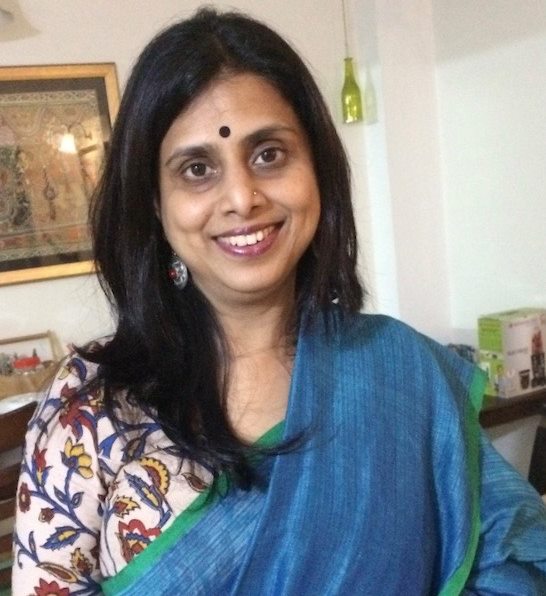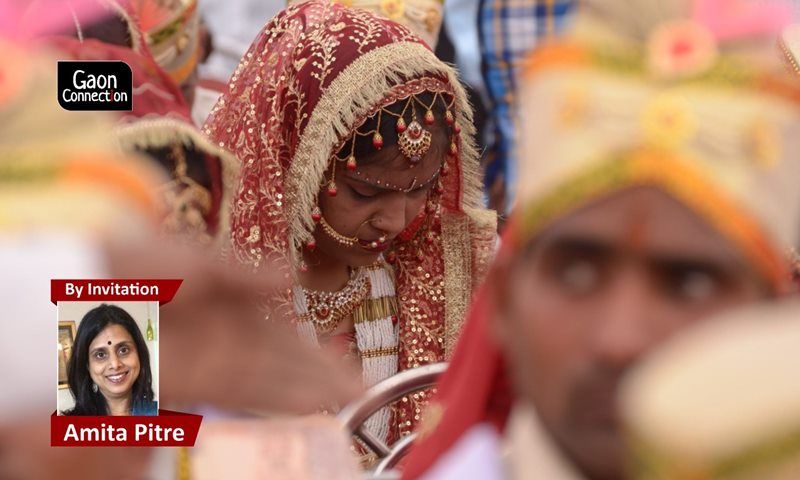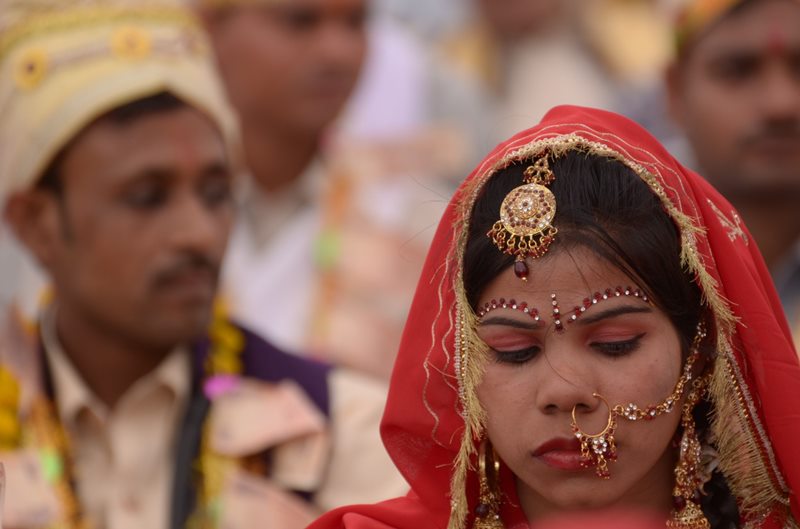Same is not equal; need enabling measures to increase girls’ age of marriage
In the current debate on age of marriage, instead of looking at the gaping inequalities across gender, caste, class and religion, which foster underage marriages, the difference of three years between a girl’s and a boy’s minimum age of marriage is being cited as an inequality that needs to be done away with.


The phenomenon of underage marriages is seen more in rural areas as compared to urban. All photos: Abhishek Verma/Gaon Connection
The ‘Age of Marriage’ amendment bill has been referred to a Parliamentary Standing Committee and this is a welcome move. The intentions behind the bill are laudable, but we will need to examine if they will work at all and if there are any unintended harms of the same.
This is a complex topic and discussions must happen to understand such concerns as: Why have we not been able to achieve the minimum age of marriage for girls at 18 years despite legislation since 1978? Will increasing the age of marriage to 21 years empower girls by itself? What is our understanding of girls’ agency and empowerment? And equality for girls?
Our young people are our greatest resource and we owe it to them to think critically before going ahead with any legislation that will have long standing consequences for them.
Also Read: Union Cabinet approves raising the legal age for marriage of women to 21 years
Underage marriages in rural India
The phenomenon of underage marriages is seen more in rural areas as compared to urban. Twenty seven per cent of rural young girls between the ages of 20 and 24 years were married before the age of 18 years as compared to 15 per cent of urban girls (NFHS 5, 2019-21). However, we see almost no efforts made to get voices from rural youth, especially girls, to tell how their lives are, what support they have currently and how will the new amendments influence their lives.
Currently there is very little awareness of the Prohibition of Child Marriage Act (PCMA), 2006 and no government or social support for young girls in case they want to oppose the marriage or get out of it once it is solemnised. This is a crucial gap due to which there is very poor prosecution under the PCMA, while news reports talk about numbers of child marriages being stopped.
Also Read: 13-year-old girl, 38-year-old ‘bridegroom’ and a payment of Rs 100,000 for ‘marriage’

NFHS 4 data shows that the maximum number of early marriages happen among the poorest 20 per cent. In the current debate on age of marriage, instead of looking at the gaping inequalities across gender, caste, class and religion which foster underage marriages, the difference of three years between a girl’s minimum age of marriage (18 years as per current law) and the boy’s at 21 years is being cited as an inequality that needs to be done away with.
However, sameness is not necessarily equality. Equality pre-supposes a level playing field and active efforts are required to make this available to all. For girls to be valued as much as boys, making their marriageable ages the same may be little help.
Young girls from different states who are part of the Young Voices National Movement have written to Parliamentarians on this issue. They say….. “We girls and young women oppose this proposal (of raising age of marriage). And demand from the parliament of this country the fundamental right and safeguards for taking decisions about our own lives in our journey to becoming and being adults. … Will such a law be able to ensure choice of partner, equality in a marital relationship and the marital home or even equality and freedom in our society? We believe that for facilitating such a change, the government needs to work on addressing the secondary status of women. There needs to be investment and progressive thinking in this direction.”
We see that child marriages are stopped and girls connected back to education only when there is strong civil society support or active presence of programs such as ‘Child-line’ which has played an important role in stopping child marriages. Child-line numbers are also most publicised only where there is strong presence of civil society.
How can young girls use such an in-accessible law and stop their own marriages or make them void? And even if they were to do so where are the social support systems such as girls collectives or empowered women collectives or residential facilities which will support them to pursue their education? Instead of criminalising marriages beyond 18 we need to create an enabling environment so girls can wait till 18 and then decide on their own. Even if the decision is to not marry at all.
Need to challenge patriarchal social norms
Before 1978, a girl’s minimum age of marriage was 15 years and boy’s was 18 years. Similar gap was maintained in 1978, when the respective ages of marriage for a boy and girl were raised to 21 and 18 years. The difference was probably to tide over the societal mindset that a girl must marry someone older than her and the practice is still widely prevalent. These patriarchal social norms which demand that a boy be older, taller, more educated, more ‘settled’ and with higher income than girls, need to be challenged, instead of changing the marriageable age.
It is social norms which dictate that dowry is a must for a girl’s wedding, and that older girls need a larger dowry, or the girl’s chastity is her biggest virtue, and a younger bride will be more submissive and will take to a new home more easily.
Social norms work hand in hand with poverty and lack of public, affordable and accessible services for education and health to fuel early marriages among the most marginalised. It is the poorest and most marginalised families who will bear the brunt of this move and who will be criminalised, especially after COVID-19 has made many of them near destitute. These families need to be enabled to provide better for their members and not criminalised.
Social norms will need to be countered by a visible change in the girls’ status – when we see that she is confident, is pursuing secondary and higher education, is earning an income, is able to support her parents when required, is capable of making her own decisions, is riding a cycle, playing football and living a life on her own terms – society will learn to imagine a girl’s life differently.
When Oxfam India initiated girls’ football teams in some villages of Bihar and Jharkhand we found these visuals actually helping the community to see what made their girls happy! Eventually with the help of Lokswar, a women’s rights organisation partnering with Oxfam, the mothers of these girls in Jharkhand, made their own football team and enjoyed thoroughly. They made the journey from overcoming their own inhibitions, fighting for their daughters’ as well as their own right to play to eventually have villagers all rooting for their respective girls and women teams.
Free and accessible education for girls
To enable this we need concrete, consistent and long standing measures such as: make education free and accessible for girls until the age of 18 years, provide bicycles and scholarships to girls to enable schooling expenses, make investments and strengthen a network of public schools with separate and clean toilets, decriminalise the sexuality of consenting adolescents and instead invest in making sexual and reproductive health services available to them through the Rashtriya Kishor Swasthya Karyakram, invest in making public spaces safer for girls and above all make gender and comprehensive sexuality education widely available to young people through schools and other means.
The amendments proposed in the Prohibition of Child Marriage Law, only talk of age. They do not outline how these measures will be instituted!
Also Read: ‘Uttar Pradesh’s population control bill detrimental for marginalised communities and women’
If we are today arguing that a girl is a major at the age of 18 years and should be able to take decisions for herself, then the same argument holds for boys. The Law Commission Report number 205 of 2008, indeed, recommends that the minimum age of marriage for boys be made 18 years and on par with girls. This is a more fitting and fair answer if the difference in marriageable age is a sore point with some.
Amita Pitre is Lead Specialist (Gender Justice) with Oxfam India. Views are personal.

